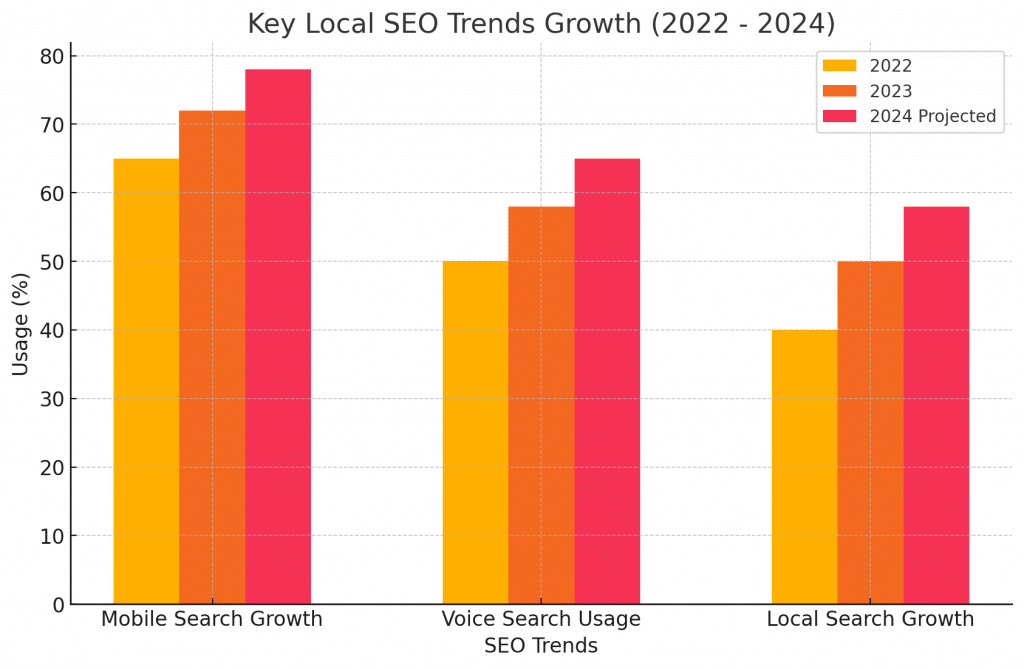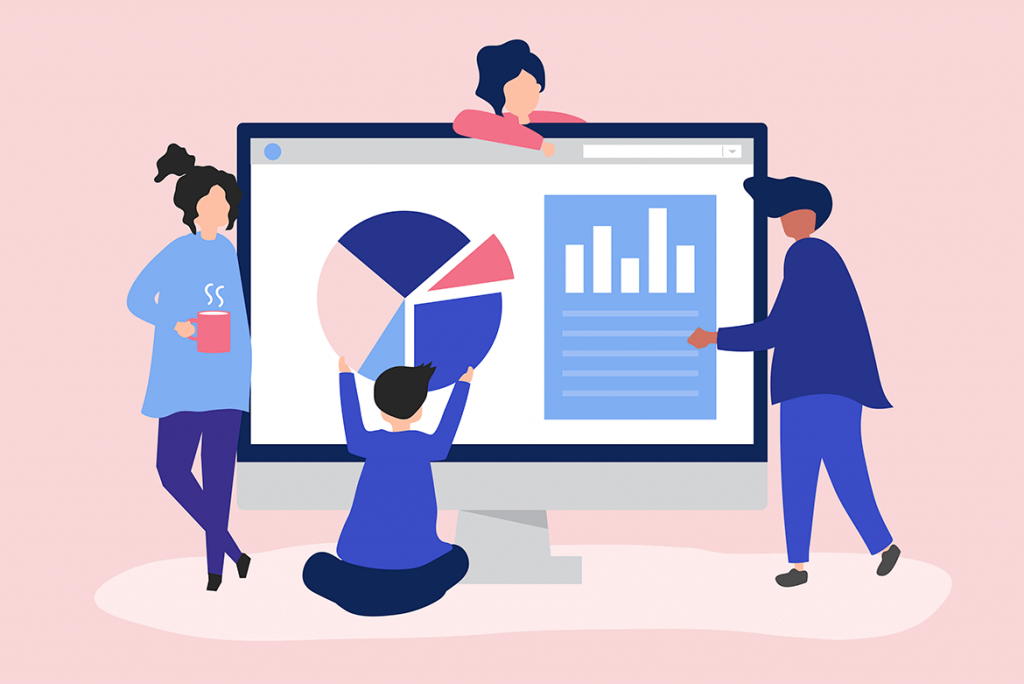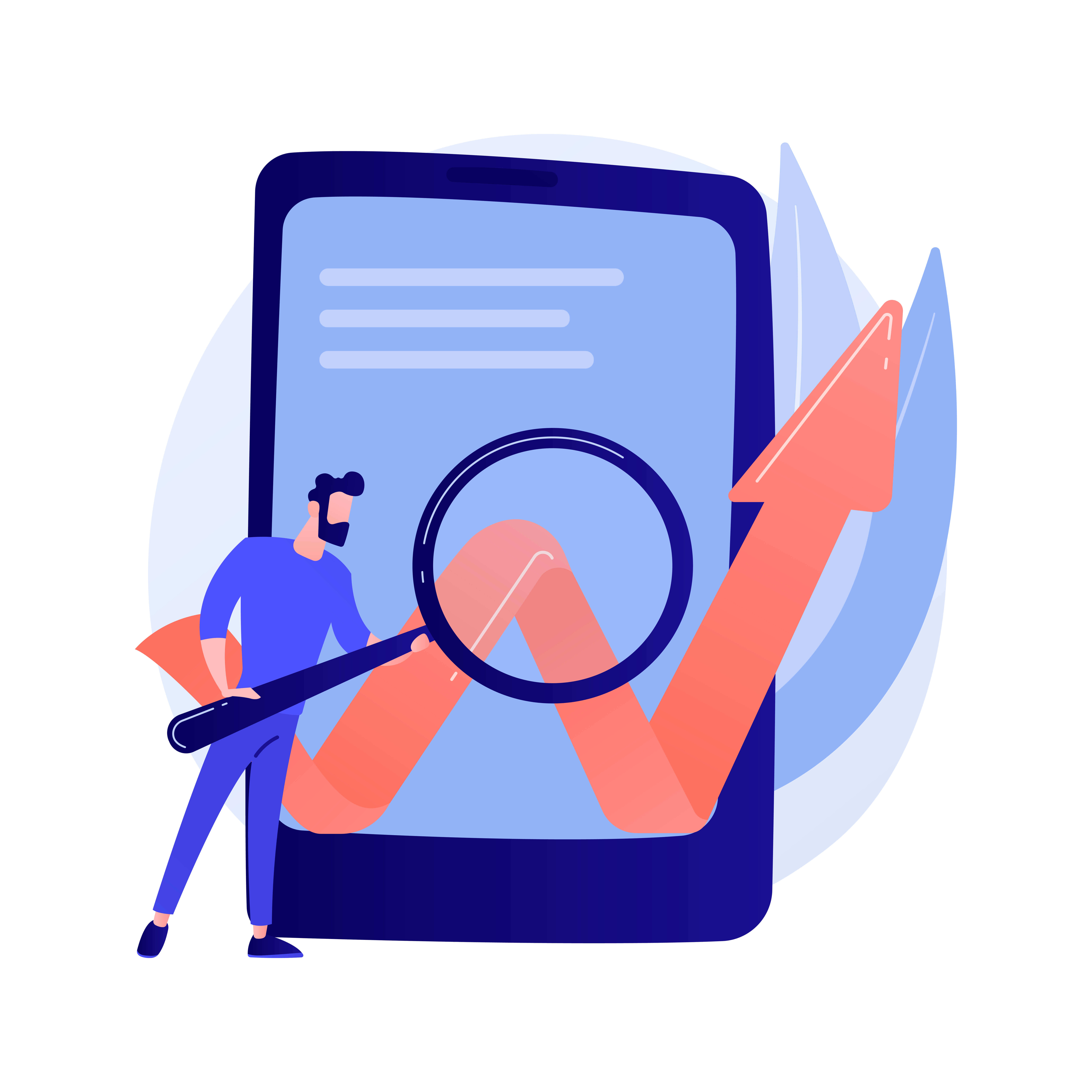Local SEO Checklist
Local SEO Checklist 2024: Step-by-Step Guide to Strengthen Your Local Search Presence
Introduction
In today’s digital world, Local SEO has become an essential tool for small and medium-sized businesses to attract customers within their local areas. This comprehensive Local SEO Checklist will guide you through proven strategies to optimize for local search and help your business rise to the top of relevant searches. Whether you’re a real estate agent or a local business owner, this guide provides actionable steps, helpful tools, and expert tips to help you enhance your local visibility in 2024.
Section 1: Local SEO Basics – What It Is and Why It’s Important
Local SEO (Search Engine Optimization) focuses on improving your business’s visibility for local search results, allowing people near you to find your services more easily. For businesses reliant on local customers, strong local SEO can increase foot traffic, generate leads, and ultimately boost sales. Here’s an overview of key components:
1.1 NAP Consistency (Name, Address, Phone)
NAP consistency refers to ensuring your business information remains uniform across all platforms, including Google My Business (GMB), social media, and other directories. Maintaining accurate NAP information is critical for both Google and potential customers who rely on this data to connect with your business.
Steps to ensure NAP consistency:
- Verify that your business name, address, and phone number (NAP) are the same across all platforms.
- Regularly check and update information as your business grows or moves.
- Use tools like Moz Local or BrightLocal to manage and monitor your NAP consistency.
1.2 Google My Business (GMB) Optimization
Google My Business is a powerful tool that can help your business appear in Google’s Local Pack, Local Finder, Google Maps, and organic rankings in general. Optimizing GMB can significantly boost local SEO by making your business more discoverable.
How to optimize GMB:
- Complete your business profile: Include your address, phone, website, hours, and categories.
- Add high-quality photos of your location, products, and team members to increase customer engagement.
- Encourage reviews: Prompt your customers to leave reviews and respond to them regularly.
These steps will help your business stand out in local search results. If you need assistance setting up or optimizing your GMB profile, our Local SEO services can provide expert guidance.
1.3 Local Backlinks
Backlinks from local and reputable sources, such as community blogs, news sites, and directories, can elevate your site’s authority in local SEO. Google views these links as indicators of trust and authority, which can positively impact your local search rankings.
How to acquire local backlinks:
- Partner with local businesses, influencers, or bloggers for collaborations.
- Sponsor local events or participate in community initiatives that may lead to mentions and backlinks.
- Register your business in reputable directories such as Yelp, Foursquare, and local Chamber of Commerce sites.
Securing high-quality local backlinks strengthens your online presence, establishing your business as a trusted entity in your community.
Section 2: Local SEO for Real Estate Agents
For real estate agents, Local SEO is especially crucial, as clients often look for property information and services specific to their area. Here’s how to get started:
2.1 City-Specific Landing Pages
Creating city-specific landing pages on your website allows you to target clients in particular locations with tailored content. These pages should be optimized for keywords like “real estate in [city]” or “homes for sale in [city].”
Tips for effective city-specific pages:
- Include unique, valuable content about the location, including neighborhood information, schools, and nearby amenities.
- Use high-quality images of properties and virtual tours to attract potential clients.
- Include client testimonials from customers who have bought or sold properties in the area.
2.2 Real Estate Schema Markup
Schema Markup is code that helps search engines understand the information on your website, potentially leading to enhanced results in SERPs. Real estate agents can benefit from specific schema types, like RealEstateAgent and Product (for individual property listings), to help listings appear in more relevant searches.
How to implement schema markup:
- Use structured data generators like Schema.org or plugins like Rank Math to add schema to your pages.
- Ensure the schema is properly added by using Google’s Structured Data Testing Tool.
Section 3: Essential Local SEO Tools to Monitor Rankings
Monitoring your local SEO progress is crucial for adjusting and improving your strategy. Here are some of the top tools for tracking local search performance.
3.1 Local Rank Checker
A local rank checker shows you where your business ranks in specific geographic areas. Use tools like:
- BrightLocal: Tracks rankings across multiple locations and provides detailed analytics.
- SEMrush: Allows you to track rankings and competitors, offering valuable insights into local performance.
3.2 Google Local Rank Tracker
Google-specific tools can help you monitor how your business ranks for keywords across different locations. Tools like Google Search Console, Moz Local, and Ahrefs provide information on local rankings, traffic, and keyword performance.
3.3 Comparative Tools
Tools like Whitespark and Synup allow you to benchmark your performance against local competitors. This lets you see how you compare within the local landscape and make necessary improvements.
For more in-depth analysis, our SEO Audit services offer a complete examination of your local SEO strengths and areas for improvement.
Section 4: Local SEO Statistics & Trends for 2024
Keeping up with local SEO trends can help you stay ahead. Here’s a look at key statistics and trends for 2024.
4.1 Growth of Voice Search
Voice search is on the rise, especially for local queries. People searching by voice often use natural, conversational language, like “find a real estate agent near me.” Optimizing for long-tail, conversational keywords will help you appear in these results.
4.2 Mobile Optimization
Most local searches happen on mobile devices, so ensuring a mobile-friendly website is essential. Make sure your site loads quickly and is easy to navigate on mobile.
4.3 Importance of Reviews
Customer reviews play a significant role in local SEO. Having recent, positive reviews can boost your business’s visibility and increase customer trust.
To stay current with the latest trends, consider using our Local SEO services for guidance.

Section 5: Google My Business Optimization Checklist
Optimizing your Google My Business (GMB) profile can significantly improve your visibility in local search results. Here’s a step-by-step checklist:
- Complete all fields: Add your business name, address, phone number, website, hours, and categories.
- Add quality photos: High-resolution images of your business, team, and products.
- Gather and respond to reviews: Encourage reviews and engage with customers to build trust.
If you’re looking for professional help, our Google My Business Optimization service provides expert support to enhance your local presence.

Section 6: Common Local SEO Mistakes and How to Avoid Them
Local SEO can be challenging, and there are common mistakes to watch out for:
6.1 NAP Inconsistency
Inconsistent NAP information (Name, Address, Phone) across listings can harm your credibility. It’s important to maintain uniformity on GMB, your website, and third-party directories. If you’re unsure of your listings’ consistency, consider a tool like Moz Local to audit them.
6.2 Outdated Business Information
Keeping your business information up-to-date, such as hours, location, and services, is critical to avoid confusing potential customers. Regularly review and update your profiles to maintain accuracy.
6.3 Ignoring Mobile Optimization
With mobile devices accounting for most local searches, having a mobile-optimized website is essential. A well-designed mobile site improves user experience and lowers bounce rates, which can positively impact your search rankings.
If you’d like to identify and fix issues like these, our SEO Audit services will provide a thorough evaluation and actionable steps to enhance your site’s performance.
Conclusion
In 2024, having an updated Local SEO strategy is a must for any business seeking visibility in local search results. This Local SEO Checklist provides a roadmap for businesses to enhance their local presence. By following these steps, you can increase your chances of ranking well in local search results and reaching the right audience.
If you’re ready to take your Local SEO to the next level, consider our Local SEO, Technical SEO, or SEO Audit services to ensure your website is
Simple Ways To Optimize Your Website For SEO
Ultimate Guide to Boosting Your Website’s Google Ranking: Proven Strategies for 2024
Introduction
In the fast-paced digital world, Google ranking remains one of the most crucial indicators of online success. The higher a website ranks on Google’s search engine results page (SERP), the more visibility, organic traffic, and potential conversions it attracts. With billions of daily searches, the majority of users don’t look past the first page, making a strong Google ranking the ultimate goal for businesses and content creators alike. To secure a high Google rank, it’s essential to stay updated with effective SEO strategies, as search algorithms evolve regularly. This guide will provide a step-by-step approach to improving your Google ranking, from optimizing on-page elements to leveraging backlinks and advanced content strategies.
What Is Google Ranking?
Google ranking represents the position your website holds in Google’s search results for a specific query. Google uses a sophisticated algorithm that evaluates many elements, such as relevance, content quality, and user engagement, to determine where a site should appear in the search results. The closer your site aligns with Google’s ranking criteria—providing valuable content, meeting technical requirements, and acquiring high-quality backlinks—the higher it can rank. To understand how Google determines rankings, you need to dive into each factor that influences the SEO landscape.
Key Factors Influencing Google Ranking
While Google’s precise ranking algorithm remains undisclosed, SEO experts have identified several critical elements that directly affect website ranking:
- Content Quality and Relevance: Google prioritizes content that fully addresses user queries with valuable, accurate information.
- On-Page SEO: Optimizing title tags, meta descriptions, headers, and keyword placement is foundational to ranking.
- Backlinks: High-quality links from authoritative sites add credibility and improve ranking.
- Technical SEO: Elements like site speed, mobile optimization, and security (SSL) play a key role.
- User Experience (UX): Metrics like bounce rate, session duration, and usability signal content satisfaction to Google.
In the following sections, we’ll examine each of these factors and provide actionable strategies to improve your Google ranking.

On-Page SEO: A Quick Win for Better Rankings
On-page SEO involves optimizing content and HTML elements on your site to make it more search engine-friendly. Here’s how you can start enhancing your website’s on-page SEO:
Optimizing Title Tags and Meta Descriptions
The title tag is the clickable headline displayed in search results, which significantly influences ranking. Place your primary keywords at the beginning of your title to signal relevance to Google. For instance, if your page is about “How to Rank Higher on Google,” ensure those words are near the start.
Meta descriptions should provide a concise summary of your content, compelling users to click. While meta descriptions aren’t direct ranking factors, they can impact your click-through rate (CTR), a critical SEO metric.
Structuring Content with Headers
Using headers (H1, H2, H3) creates a logical structure for both users and search engines. This hierarchy improves readability and aids Google in understanding the content’s context. Include LSI (Latent Semantic Indexing) keywords in these headers for enhanced relevance. LSI keywords are related terms that add context without overloading the primary keyword.
Optimizing Title Tags and Meta Descriptions
The title tag is the clickable headline that appears in Google’s search results, and it plays a crucial role in ranking. Frontloading keywords—placing them at the beginning of your title—signals to Google the relevance of your content. For example, if your page focuses on “How to Rank Higher on Google,” make sure those words appear at the beginning of the title.
Meta descriptions should act as a compelling summary of your content, encouraging users to click. Though meta descriptions aren’t a direct ranking factor, a well-crafted description improves your click-through rate (CTR), which Google does take into account.
Headers and Content Structure
Use headers (H1, H2, H3) to structure your content logically, making it easier for both users and search engines to understand. This hierarchy not only improves readability but also helps search engines index your content effectively. Be sure to include LSI keywords (Latent Semantic Indexing), which we’ll cover in more detail next, to enhance the relevance of your content.

The Role of LSI Keywords in SEO
Latent Semantic Indexing (LSI) keywords are terms related to your main keyword that add context, helping search engines grasp the nuances of your content. For example, if your primary keyword is “Google ranking strategies,” LSI keywords could include “SEO tactics,” “organic traffic growth,” and “improve website visibility.”
Using LSI keywords helps avoid keyword stuffing, which can lead to penalties, and enriches your content with varied terminology to capture a wider audience.
Finding LSI Keywords
To find LSI keywords, use Google’s autocomplete feature by typing in your main keyword and viewing suggested terms. Tools like LSIGraph and SEMrush can also generate LSI keywords related to your topic.
How to Find LSI Keywords
One of the simplest ways to find LSI keywords is by using Google’s autocomplete feature. When you begin typing your main keyword into Google’s search bar, the suggested terms that pop up are often great LSI keywords. Additionally, tools like Semrush or LSIGraph can help you identify related terms that users commonly search for alongside your primary keyword.

Conducting a Comprehensive Technical SEO Audit
Technical SEO involves optimizing the backend of your site to ensure search engines can crawl, index, and interpret your pages correctly. Even the best content may struggle to rank if technical SEO issues exist.
Common Technical SEO Issues
- Broken Links: Broken internal or external links lead to poor user experience. Regularly audit your site to fix or remove broken links.
- Crawl Errors: Use Google Search Console to detect and resolve crawl errors.
- XML Sitemaps: Update and submit your XML sitemap to Google to help search engines discover all pages.
Page Speed and Core Web Vitals
Page speed is a crucial ranking factor. Use tools like Google PageSpeed Insights or GTMetrix to identify speed improvements. Google’s Core Web Vitals add new metrics, such as:
- Largest Contentful Paint (LCP): Measures loading time of the largest visible element.
- First Input Delay (FID): Assesses interactivity.
- Cumulative Layout Shift (CLS): Ensures stable page loading.
Meeting these benchmarks improves user experience and can boost your ranking.
The Importance of Mobile Optimization

Since Google shifted to mobile-first indexing, your site’s mobile version is prioritized over desktop. Given that over 50% of traffic now comes from mobile devices, optimizing for mobile is essential.
Key Mobile Optimization Techniques
- Responsive Design: Ensure your website adapts to different screen sizes.
- Simplified Navigation: Minimize drop-downs and nested menus.
- Touch-Friendly Buttons: Size buttons for touchscreens to prevent user frustration.
- Accelerated Mobile Pages (AMP): Implement AMP for faster mobile loading, enhancing both user experience and ranking potential.
By focusing on mobile optimization, your site not only ranks higher but offers a user-friendly experience, a key goal for Google.
Why Backlinks are Critical for Ranking

Backlinks are among the most impactful ranking signals. Each backlink from a reputable website serves as an endorsement of your content’s quality and authority. However, backlink quality is more important than quantity.
Building High-Quality Backlinks
- Guest Blogging: Write for authoritative sites in your niche to gain backlinks and exposure.
- Linkable Content: Create content others want to link to, such as research, infographics, or guides.
- Industry Outreach: Connect with influencers to increase the chances of backlinks.
- Fix Broken Links: Find broken links on relevant sites using tools like Ahrefs and offer your content as a replacement.
High-quality backlinks from authoritative sites boost credibility, improving ranking. Avoid spammy links, as they can lead to penalties.
Creating Long-Form Content to Boost Rankings

Long-form content provides depth, helping answer users’ questions comprehensively. Studies show that content exceeding 1,400 words tends to rank higher on Google.
Benefits of Long-Form Content
- Extended Dwell Time: Users spend more time on detailed content, a positive signal to Google.
- Keyword Opportunities: Long-form articles can naturally incorporate more keywords.
- Enhanced Backlink Potential: Valuable, in-depth content is more likely to receive backlinks.
- Authority Building: Long-form content establishes expertise.
To create effective long-form content, thoroughly research the topic, address various aspects, and use subheadings, bullet points, and visuals for better engagement.
Faq
Freequently Ask
Questions
How long does it take to see improvements in Google ranking?
SEO is a long-term strategy, and it usually takes 3 to 6 months to see noticeable improvements in rankings, depending on your industry and competition.
There isn’t a single factor, but a combination of content quality, backlinks, and technical SEO are the most important drivers of good rankings.
While social signals like shares and likes don’t directly affect rankings, they can lead to more traffic and backlinks, which indirectly help your SEO.
You should aim to update your content every 6 to 12 months, especially for high-performing pages that you want to maintain at the top of search results. Fresh content signals to Google that your website is active and relevant, which can improve rankings.
While backlinks are one of the most powerful ranking factors, it is possible to rank on the first page of Google without them, particularly for low-competition keywords. However, in highly competitive industries or for broader search terms, building backlinks will be crucial to achieving and maintaining high rankings.
While there is no set rule, research shows that content with 1,500 to 2,500 words tends to perform better in search rankings. Longer content typically provides more in-depth information, which Google prioritizes when it comes to ranking pages.
No, meta descriptions do not directly affect your website’s ranking. However, well-crafted meta descriptions can improve your click-through rate (CTR), which is a behavior-based signal that Google uses to assess the quality of a page.
Page speed is a direct ranking factor. A slow-loading website can lead to a poor user experience, causing users to bounce quickly, which in turn signals to Google that your site may not be meeting user expectations. Aim for your site to load within 2 to 3 seconds for optimal performance.
Yes, multimedia content like images and videos can improve user engagement, increase dwell time, and reduce bounce rates—all of which can positively influence your Google ranking. Optimizing your images and videos with proper alt text, captions, and compressed sizes also helps with SEO.
Conclusion
Improving Google ranking is a continuous process that demands consistent attention. By optimizing on-page elements, ensuring technical functionality, creating valuable content, and building high-quality backlinks, you can steadily rise in search rankings. Key strategies like mobile optimization, enhanced user experience, and adherence to Core Web Vitals all contribute significantly to better rankings.
Regularly updating content, utilizing internal links, and tracking progress through tools like Google Analytics and Google Search Console ensures sustained improvement. As Google’s algorithms evolve, delivering value to users remains the central goal. Focus on providing comprehensive, relevant, and engaging content, and you’ll achieve greater visibility and long-term SEO success.



